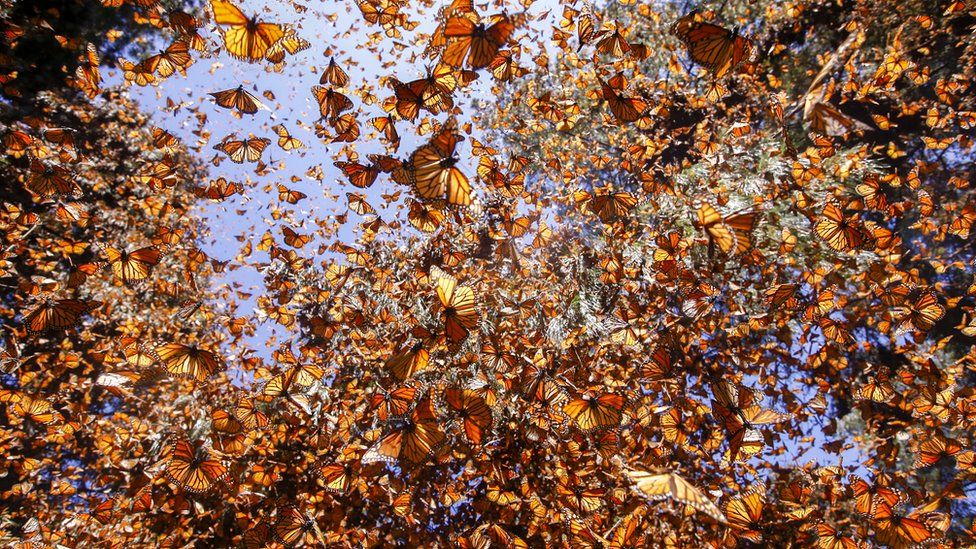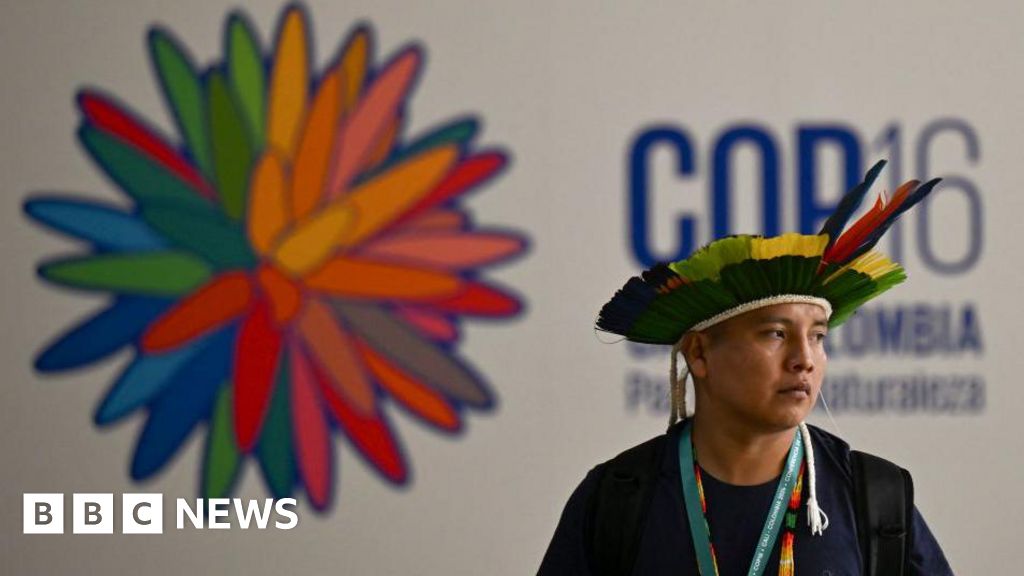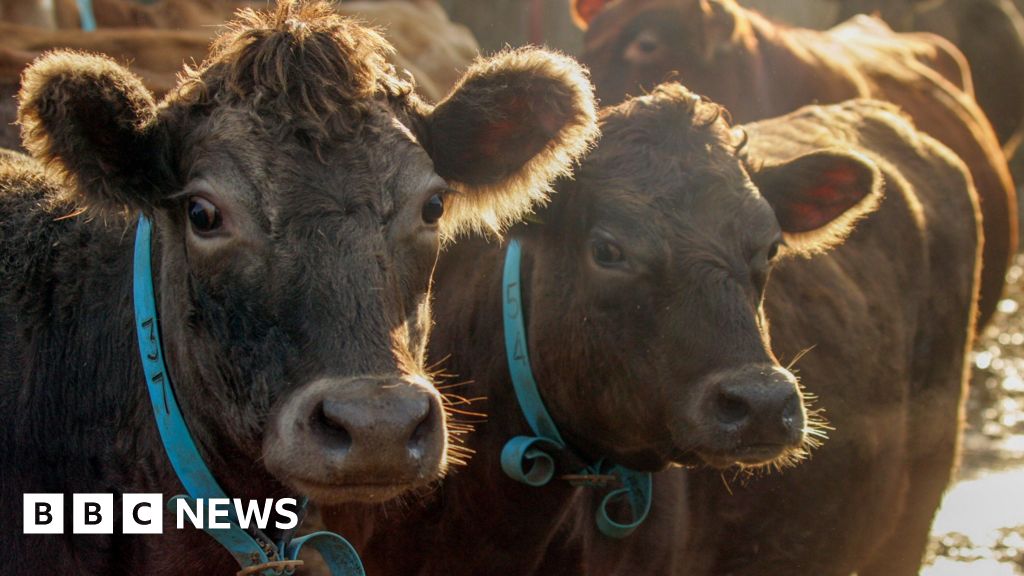 Image source, Getty Images
Image source, Getty Images
A spectacular sight - monarchs blanketing trees in Mexico after their epic journey south
By Maddie Molloy
Climate and Science Reporter
What makes for a successful insect migration?
For a monarch butterfly, the more white spots you have, the better your chances, new research suggests.
Researchers from the University of Georgia studied nearly 400 wings of monarchs at different stages in their famed journey south from Canada and the northern United States to Mexico.
Successful monarchs had 3% less black and 3% more white on their wings.
It's not clear how these spots help, but one theory is that they may alter air flow patterns around the wings.
"We actually went into this thinking that monarchs with more dark wings would be more successful at migrating because dark surfaces can improve flight efficiency. But we found the opposite," said Andy Davis, assistant researcher at University of Georgia's Odum School of Ecology.
Image source, Getty Images
Image caption,The more white spots, the better, researchers say
As monarch butterflies cannot survive the cold, long northern winters, they migrate distances up to 3,000 miles (4,828km) to hibernate in central Mexico.
Once they've arrived, they huddle together at high altitude in Oyamel fir trees, often blanketing them completely. In spring they return north, laying eggs in milkweeds on the way.
The researchers say that monarchs may have evolved to have more white spots, as a way of taking in more solar energy on their long flight.
"The amount of solar energy monarchs are receiving along their journey is extreme, especially since they fly with their wings spread open most of the time," Mr Davis said. "After making this migration for thousands of years, they figured out a way to capitalize on that solar energy to improve their aerial efficiency."
The study is published in the journal PLOS ONE.
.png)
 1 year ago
6
1 year ago
6









 English (US) ·
English (US) ·